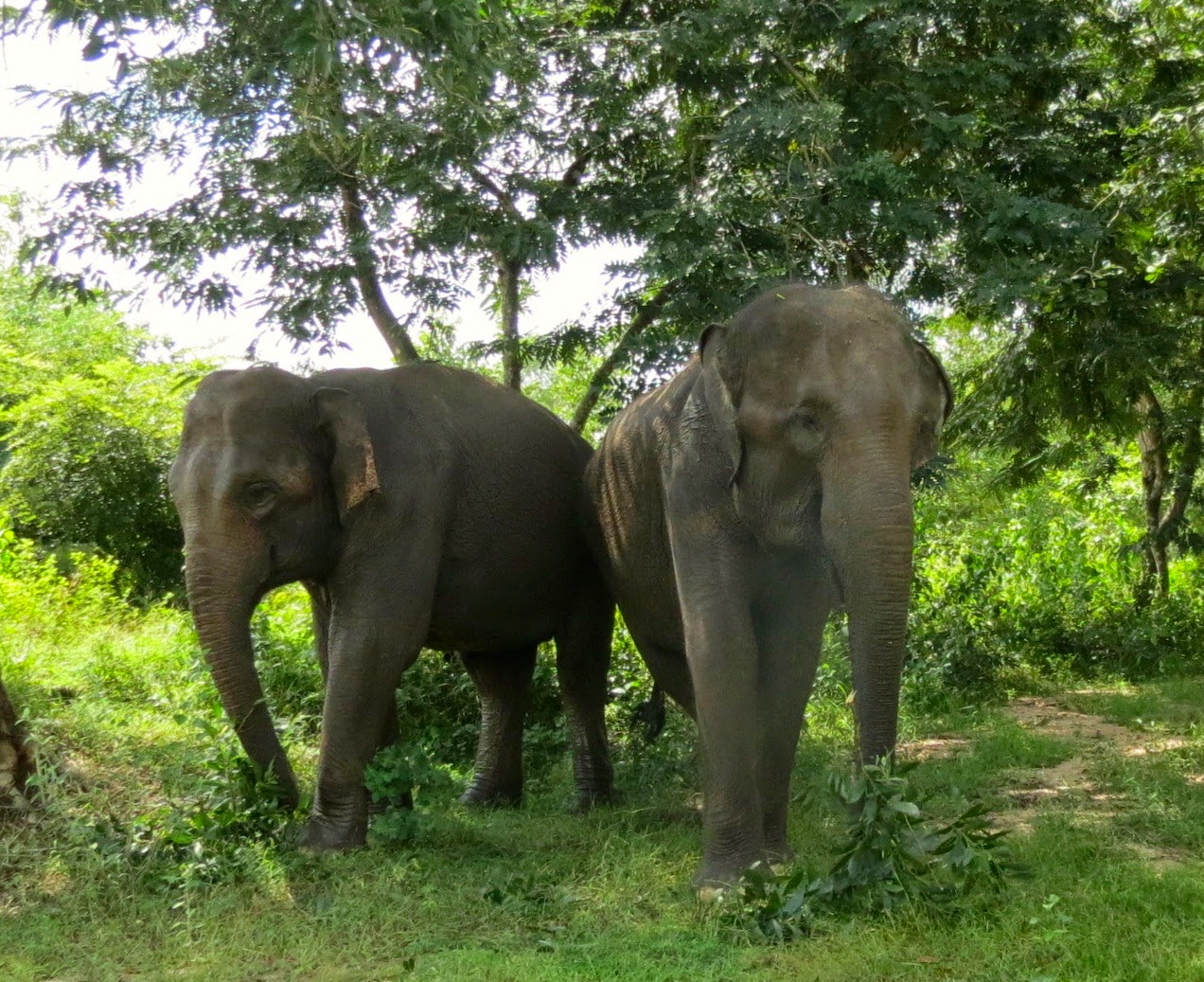By Steven Stone (Guest Blogger) @ElephantDude
 |
| (C) Steven Stone 2012 |
Wildlife Trafficking, the
illegal trade of wildlife or “wildlife products” is big business: $19 billion to $40 billion annually.[2] It is now generally accepted as fact that
some of these funds go to finance terrorist activities[3].
A kilogram of elephant ivory can sell for
as much as $2,200 on the black market in China; a kilo of rhino horn: $66,000.[4] A single tiger can be worth $50,000.[5] Tiger bones, whiskers, skins and meat and
every body party are prized in China and other Asian countries. A recent article in France24 reports on accusations that watching caged tigers be killed
(by humans) has become a spectator sport for wealthy Chinese businessmen in
southern China and accuses some government officials there of being complicit.[6]
The
problem of wildlife trafficking has been receiving more attention worldwide in the
past year in part because of the African Elephant Crisis and its link to financing for terrorism. Among
other things, last year, President Obama formed the Federal Advisory Council on
Wildlife Trafficking,
as part of a commitment to increase U.S. efforts to
counter poaching and the illegal wildlife trade; and earlier this year HRH
the Duke of Cambridge Prince William announced the launch of United for Wildlife, an initiative to fight wildlife trafficking supported by a
group of major conservation organizations and celebrities.
Tigers
often top the list of the most popular animal in surveys of favorite animals
throughout the world. In Chinese culture the tiger is the king of the beasts. In the United States we like tigers so much
that more than 50 colleges and universities have the tiger as their mascot.
Other examples abound: the MLB’s Detroit Tigers, Tony the Tiger, the cereal box icon, whose picture has been seen by
several generations on boxes of Kellogg’s Frosted Flakes; and the popular slogan
in the 1960s to “put a tiger in your tank” for gasoline (Esso, which later
became Exxon).
In
his July 31, 2014 article Forgotten
Tigers: Have Stripes Become Unfashionable?,[7] John Sellar, a former Chief of Enforcement
for the Convention on International Trade in Endangered Species (CITES), asks the question
whether we still care about the fate of the tiger. He cites examples that suggest there is not much
interest. There have been and are many initiatives, projects and organizations[8]
to help save tigers and increase their numbers. Some of them have been
successful: in Nepal[9]
and India,[10]
tiger populations have actually increased, but overall the trend has been
down. Perhaps one reason we don’t read
much about the killing of tigers is because the numbers involved are so low --
the poaching of ten tigers does not sound that bad, but when there are only
3,000 tigers remaining in the wild, it is very bad news indeed.
No
matter how much of an effort is made to protect endangered species and how
effective law enforcement and customs patrols are, poaching will continue to be
a threat as long as there is a demand.
It may take the criminals longer and may drive up the prices on the
black market, but the demand appears to be insatiable and enough consumers have
the resources and are willing to use them to acquire wildlife products.
 |
| (C) Steven Stone 2012 |
Even
with the massive number of elephants being killed, the demand for ivory in
China[11]
and other countries remains insatiable. It is a daunting task to change the
values and habits of hundreds of millions of people. Public awareness campaigns can have an impact[12]
on consumer demand for wildlife products.
WildAid’s campaign to reduce
the demand for ivory in China, using well-known personalities such as Yao
Ming, David Beckham and Prince William, among others, shows great promise of
making a difference in the buying habits of the Chinese. With an estimated 70%[13]
of illegal ivory destined for China, an impact here would save the lives of
countless elephants.
The National Tiger4Tigers Coalition in partnership
with the National Wildlife Refuge Association is raising awareness of the
plight of the tiger by targeting the more than 50 U.S. colleges and
universities that have the tiger as their mascot. T4T is building on the loyalty and affinity of
students, faculty and alumni for their mascot to garner support for efforts to
save wild tigers from being killed. Perhaps the most important thing about T4T
is that it is helping another generation become aware of the plight of the
tiger, and by extension the threat facing other endangered species. This awareness includes the key message that
if they want to live in a world with tigers, elephants and other wildlife, they
have to get involved.
No
single initiative will save tigers from extinction or stop the killing of tens
of thousands of elephants. But you have
to start somewhere, and try, or you might as well give up. If you give up, then
it’s all over. If we lose the war to
save tigers from extinction, it will be tragic; if we lose but do not do everything
we can to fight it, that would be an irreparable moral failure.
Steven Stone is an attorney with the law
firm Rubin, Winston, Diercks, Harris & Cooke LLP. Be sure to follow Steven on Twitter @ElephantDude
[1]
The number of elephants killed each year is an estimate, based largely on ivory
seizures provided by countries and which vary widely depending on the sources
and the reporters. For 2012, most estimates range from 22,000
to 35,000
elephants killed. Regardless of the
exact number, a lot of elephants are being killed.

No comments:
Post a Comment